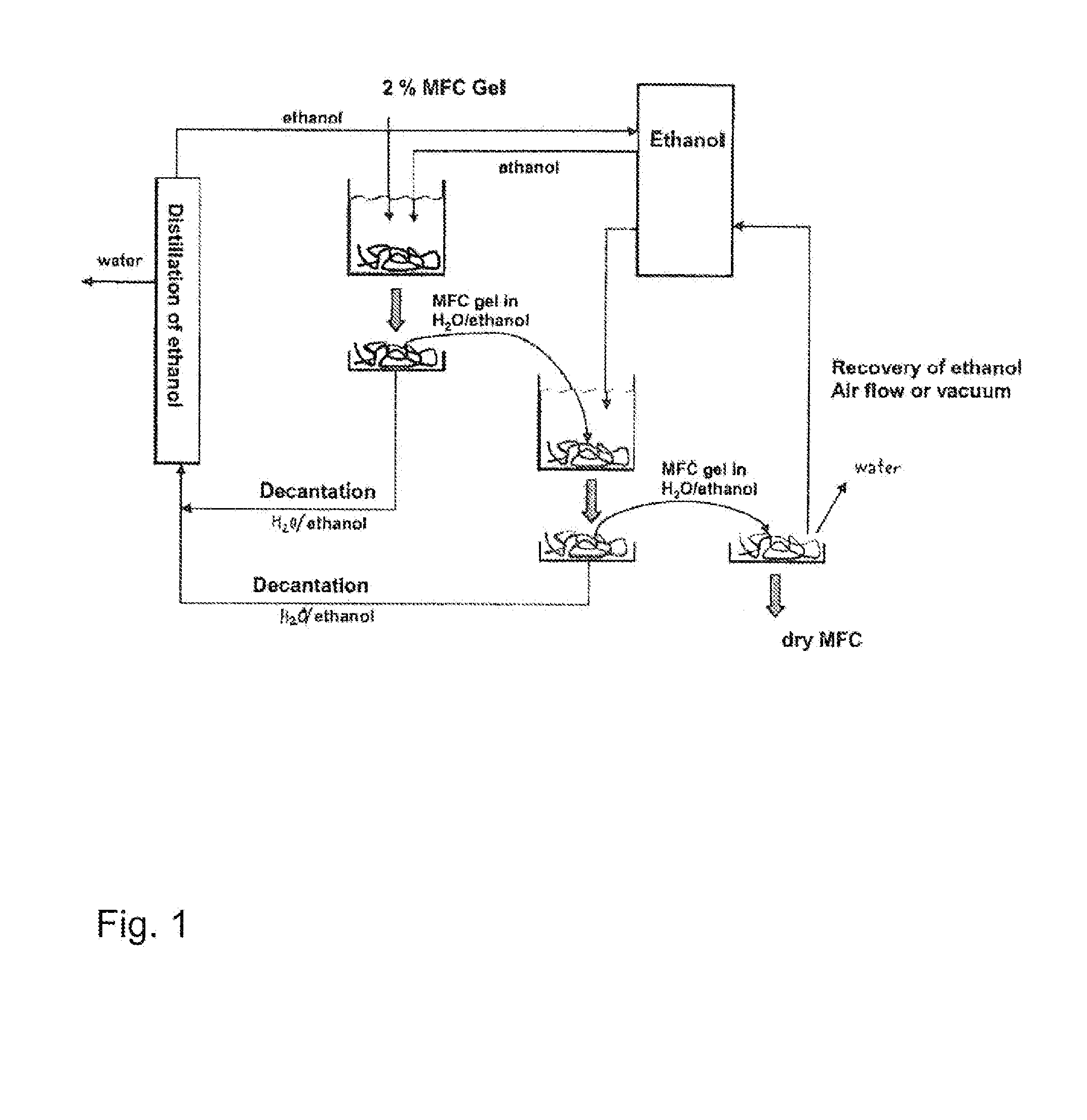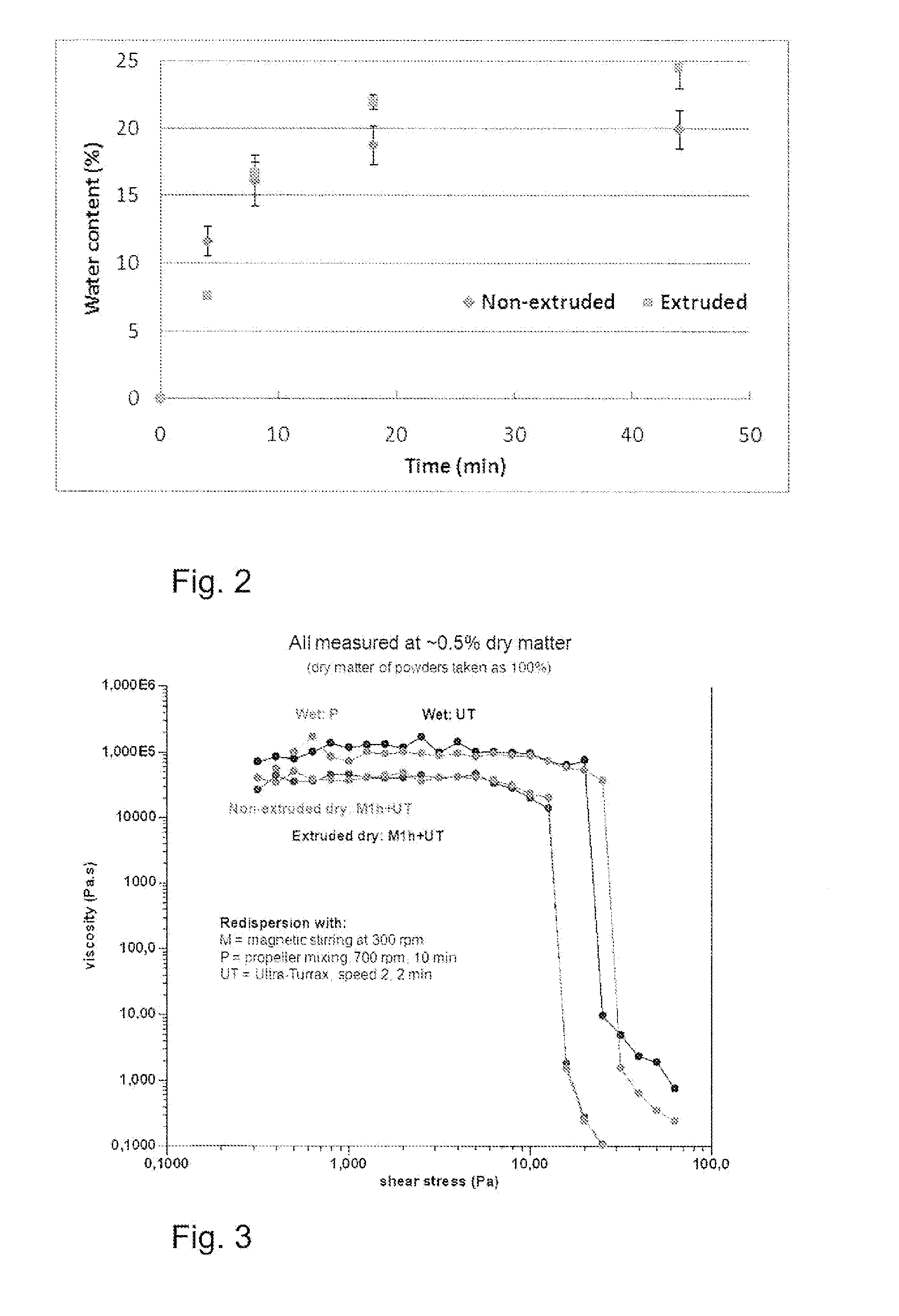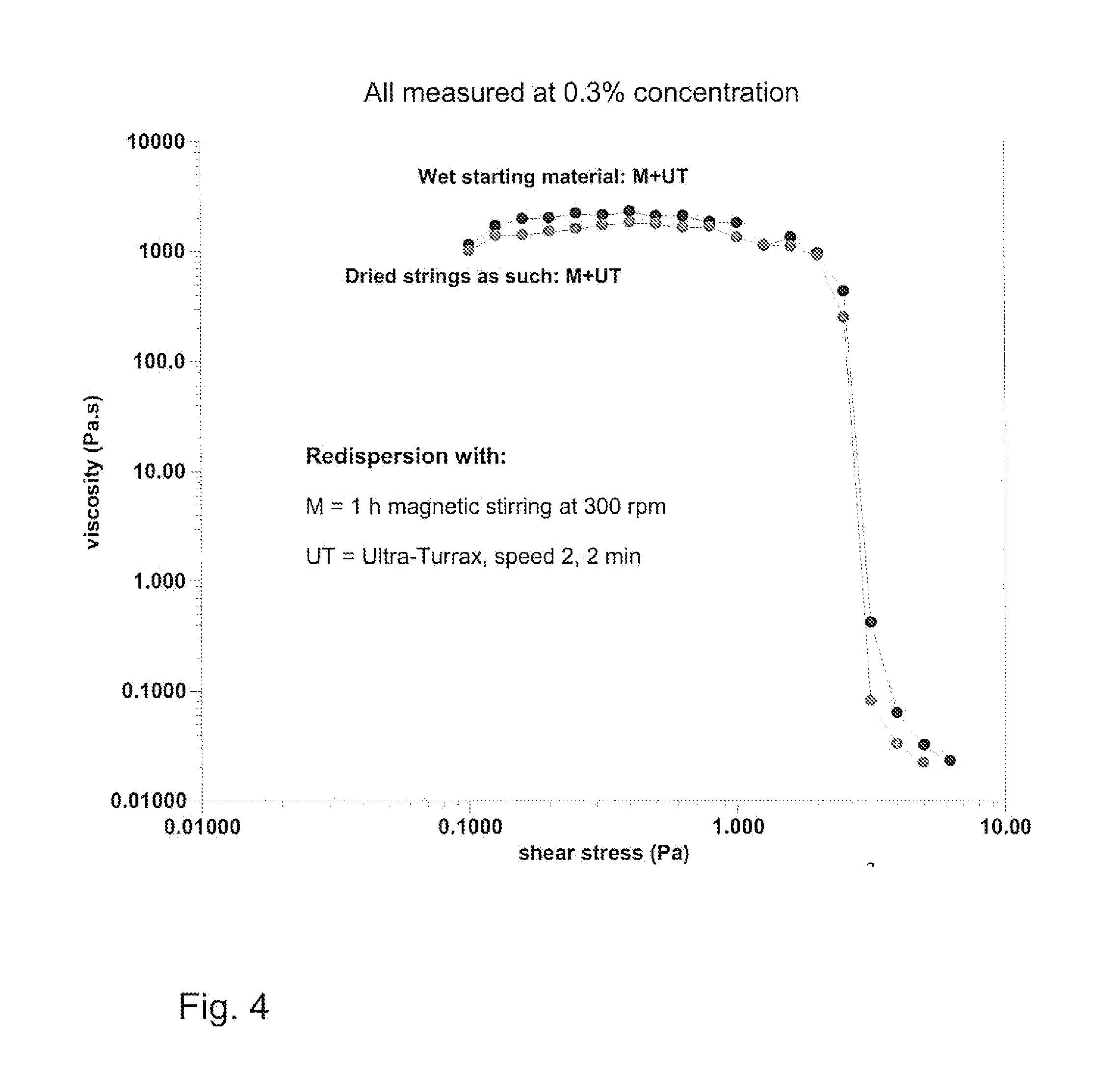Method for processing nanofibrillar cellulose and product obtained by the method
- Summary
- Abstract
- Description
- Claims
- Application Information
AI Technical Summary
Benefits of technology
Problems solved by technology
Method used
Image
Examples
example 1
General Example
[0059]Into 40 ml of 96% ethanol, 5 ml of 0.9% Ox-NFC was extruded through 1 mm hole using a syringe. In this concentration NFC formed a continuous hydrogel “worm” (diameter 1 mm). Immediately after soaking, the water started to diffuse into the ethanol phase, and ethanol into the NFC matrix. This process could be followed visually due to the differences in refractive index between ethanol and water. The process could be followed also by monitoring formation of gas bubbles—the solubility of dissolved air in the gel was decreased when ethanol entered into the NFC matrix and the gel started to bubble. In equilibrium state of the system, the “worm” should contain 0.9% NFC, 85% ethanol, and 14% water.
[0060]After 15 minutes, the “worm” could easily be lifted from the ethanol-water mixture into another 96% ethanol bath (40 ml) where the residual water was separated (5-15 minutes). The residual water content is dependent on relative volume fractions between water and ethanol ...
example 2
Extrusion Process
[0065]20 liter of 2.0 wt % NFC hydrogel (Ox-NFC, CM-NFC, or Cat-NFC) was extruded into 80 liters of ethanol with a commercial extrusion apparatus. The extrusion port consists of 440 circular (diameter 1 mm) output ports. The extruder nozzle was kept underneath the alcohol surface during the extrusion. After the extrusion stage, the mixture was stirred with a blade agitator with moderate rate. The long and entangled NFC coils or strings were diminished in length by the shear effect of the agitator.
[0066]After one hour, the solvent exchanged NFC coils were manually decanted and filtered through a coarse mesh (28 mesh). Finally, the NFC coils were dried in vacuum with a rotavapor into a dry coil-like product. Solid content of the product was 95% and yield 90%.
example 3
Crumb Process
[0067]In this process the physical entities are formed by disintegrating from larger blocks supplied to the solvent volume. 1 liter of 2.0 wt % NFC hydrogel (Ox-NFC, CM-NFC, or Cat-NFC) was introduced into 4 liters of ethanol. The mixture was agitated with a commercial turbine blade agitator until the gel phase was crumbled into smaller gel entities. Size of the crumbled gel particles were typically between 0.5 mm to 5 mm in diameter. After the gel crumbs were formed, the mixture was gently mixed for one hour in order to allow solvent exchange to take place.
[0068]After one hour, the solvent exchanged NFC gel crumbs were manually decanted and filtered through a coarse mesh (28 mesh). Finally, the material was dried in vacuum with a rotavapor into dry particles. Solid content of the product was 95% and yield 90%.
[0069]FIG. 2 shows how the water content of ethanol increases in course of the introduction of an aqueous 2% Ox-NFC gel into an ethanol bath, in proportion of one...
PUM
| Property | Measurement | Unit |
|---|---|---|
| Volume | aaaaa | aaaaa |
Abstract
Description
Claims
Application Information
 Login to View More
Login to View More - R&D
- Intellectual Property
- Life Sciences
- Materials
- Tech Scout
- Unparalleled Data Quality
- Higher Quality Content
- 60% Fewer Hallucinations
Browse by: Latest US Patents, China's latest patents, Technical Efficacy Thesaurus, Application Domain, Technology Topic, Popular Technical Reports.
© 2025 PatSnap. All rights reserved.Legal|Privacy policy|Modern Slavery Act Transparency Statement|Sitemap|About US| Contact US: help@patsnap.com



